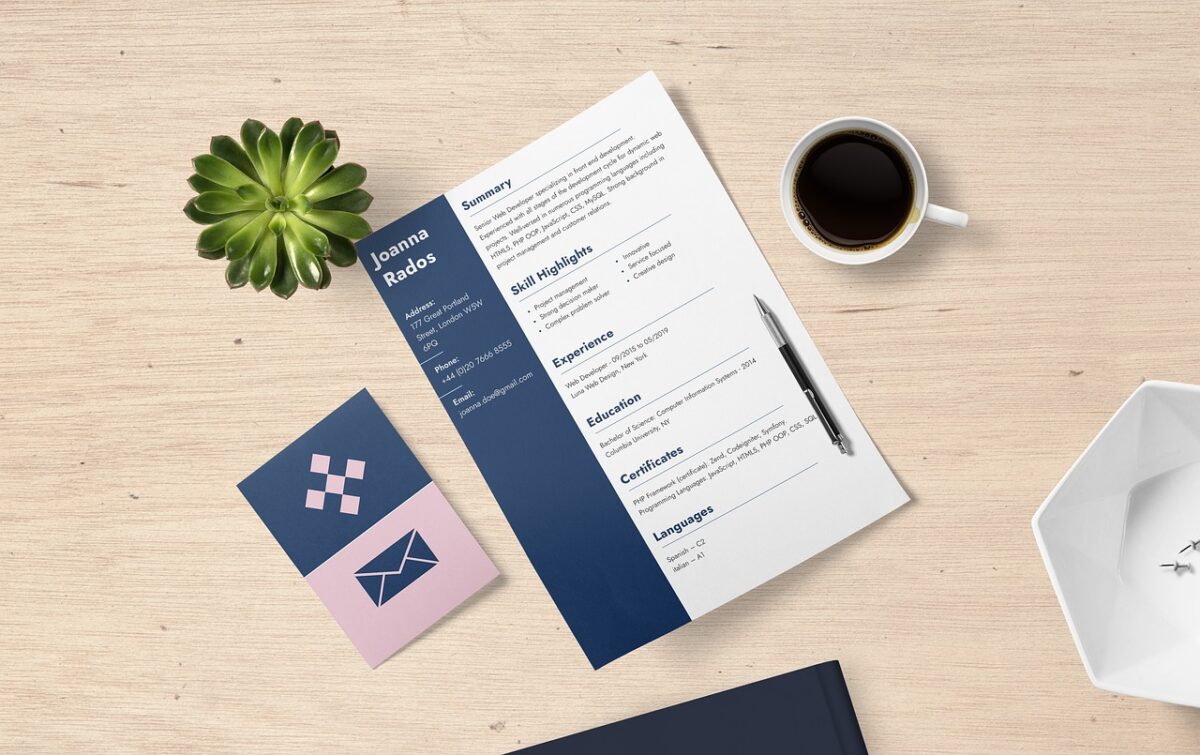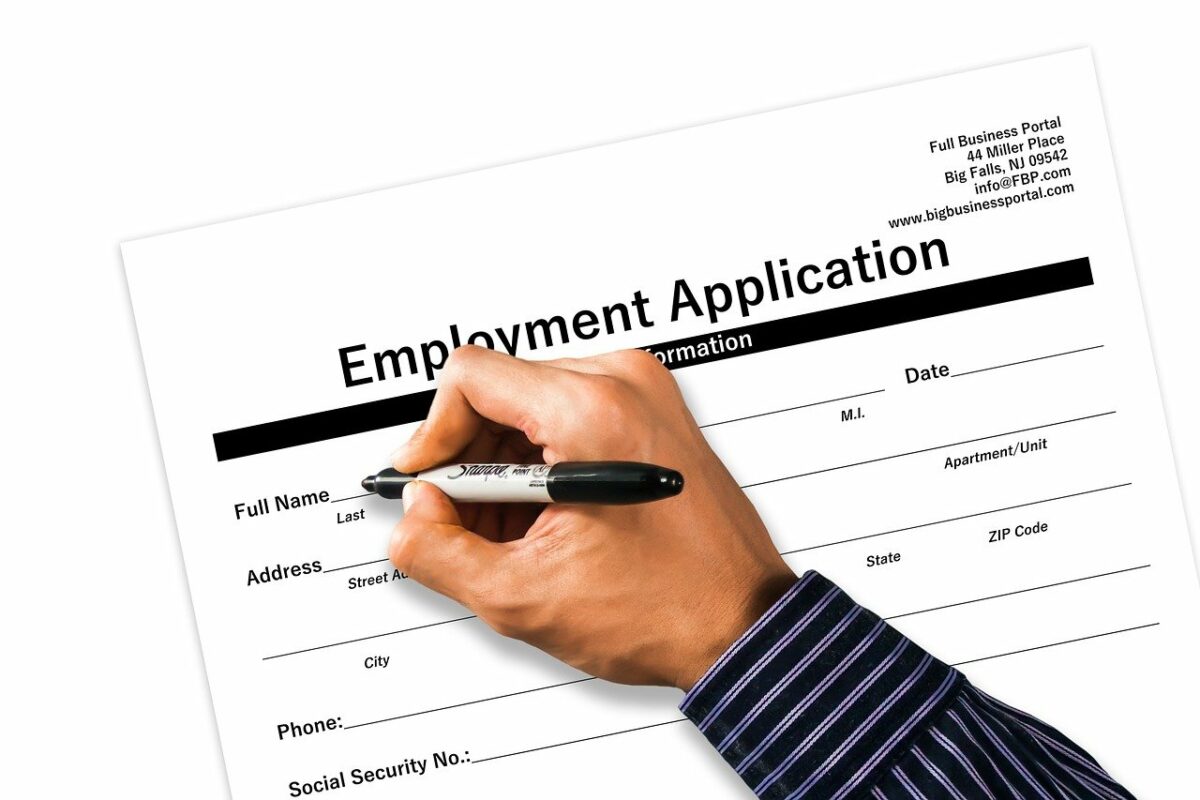How To Evaluate CVs

Evaluating CVs effectively is critical to the hiring process, ensuring that the best candidates are identified and selected for the role. For SMEs, Hiring Managers, and HR professionals, mastering this skill can significantly impact the quality of hires, streamline recruitment, and reduce turnover. Our blog will equip you with the essential strategies and tools to excel in CV evaluation. We will introduce key resources, including our library of sample job descriptions, comprehensive recruitment resources, and interview preparation materials. Additionally, you will find valuable insights from our detailed guide, A Guide On How To Hire, designed to enhance your hiring practices from start to finish.
Highlights And Key Takeaways:
- A well-crafted job description is essential in the CV evaluation process, serving as a blueprint to identify the right candidate effectively.
- When reviewing job applications, employers must consider several key factors (work experience, education, skills and competencies, and cultural fit) to select the most qualified candidates who will thrive in their team and industry.
- Effective recruitment involves leveraging various resources to identify and select the best job seekers for your company. Our extensive library of recruitment resources provides invaluable tools and guides to enhance your hiring process.
Quick Links:
- Understanding The Job Description
- Initial Screening Of CVs
- Detailed CV Analysis
- Comparing A CV To A Job Description
- Utilising Recruitment Resources
- Advanced Screening Techniques
- Making The Final Decision
- Starting The Recruitment Process
- Hiring Process FAQs
Understanding The Job Description
A well-crafted job description is essential in the CV evaluation process, serving as a blueprint to identify the right candidate effectively. It sets out the specific requirements and expectations for the role, ensuring recruiters can accurately assess a candidate’s fit. For a deeper dive into this topic, our blogs How To Write The Perfect Job Description and A Job Description A – Z Guide: UK Job Description Writing Guide offer comprehensive insights.
Key elements of a job description include the job title, responsibilities, required skills, qualifications, and experience. A precise job title like ‘Procurement Officer’ brings clarity to your recruitment efforts, helping to attract the correct applicants. Clearly defined responsibilities outline the tasks the candidate will undertake while listing the required skills – both technical skills and soft skills – ensures applicants understand the necessary competencies. Qualifications detail the education and professional background needed, helping to gauge whether a candidate is sufficiently qualified. For further guidance, explore our blogs on Job Title Examples, What Skills to Include in a Job Description, What Are Job Responsibilities?, and What Qualifications Should I Include in a Job Description?
Our blog will use a Procurement Officer job description example to illustrate matching a candidate’s CV to the job description. This role will provide a practical framework for understanding how to align a candidate’s experience, skills, and knowledge with the specific requirements outlined in the job description, ensuring that recruiters can effectively identify the most qualified candidates.
Initial Screening Of CVs

The initial screening of CVs is a crucial first step in identifying potential job applicants who are a good fit for the role. During this stage, recruiters must decide when to perform a quick scan versus a detailed document review.
A quick scan involves a swift review of the CV and cover letter to determine whether the job seekers meet the basic qualifications and essential criteria outlined in the job description. This approach is useful when dealing with a high volume of applications. On the other hand, a detailed review is necessary for shortlisted candidates, allowing the recruiter to evaluate small details and ensure the applicant’s skills, experience, and qualifications align with the job’s specific requirements.
Using the job description as a checklist is an effective method for this process. By comparing each CV against the essential and desirable criteria, recruiters can systematically filter out candidates who do not meet the minimum requirements and focus on those who are a potential good fit.
When conducting initial screenings, watch out for common red flags, such as:
- Inconsistent employment history or unexplained gaps
- Lack of relevant experience or qualifications
- Poor formatting and numerous typos
- Overly vague descriptions of job roles and responsibilities
- Absence of a tailored cover letter addressing the specific job
- Frequent job changes without clear reasons
By effectively balancing quick scans and detailed reviews and utilising the job description as a checklist, recruiters can efficiently identify the most promising job applicants while avoiding common pitfalls.
Detailed CV Analysis
Detailed CV analysis is the next crucial step in the hiring process, requiring a thorough evaluation of each candidate’s job history and overall track record. When reviewing job applications, employers must consider several key factors to select the most qualified candidates who will thrive in their team and industry:
1. Evaluating Work Experience
The relevance, depth, and career progression of a candidate’s work experience are paramount. Look for jobs that align closely with the job description, noting any industry-specific experience that might give the candidate an edge. Assess the depth of their experience by examining the responsibilities and achievements listed for each position and evaluate their career progression to understand their growth and potential. For further tips, read our guide How To Evaluate A Candidate’s Work Experience.
2. Assessing Educational Background and Qualifications
Reviewing a candidate’s educational background and qualifications is essential to confirm they meet the job’s specific requirements. Ensure their degrees, certifications, and training are relevant to the role and match the qualifications outlined in the job description. This assessment helps validate the candidate’s foundational knowledge and technical skills necessary for the position.
3. Identifying Key Skills and Competencies
Identify key skills and competencies that align with the job description. These may include both technical skills and soft skills critical for the role. Look for evidence of these skills in the candidate’s job history, accomplishments, and any additional training or certifications they have completed. This ensures the candidate has the necessary competencies to perform effectively.
4. Indicators of Cultural Fit
Cultural fit is a vital aspect of candidate selection. A good cultural fit indicates that the candidate’s values, work style, and personality align with the company’s culture and brand values. For insights on infusing company culture into your job descriptions, refer to our blog How To Infuse Company Culture And Brand Values Into Your Job Descriptions. Indicators of a good cultural fit can be gleaned from their previous employers, team experiences, and how they describe their roles and achievements in their CV or resume.
By thoroughly analysing a candidate’s job history, educational background, key skills, and cultural fit, recruiters can make informed decisions, ensuring that the selected candidates meet the technical requirements and align well with the team and the company’s broader goals and values.
Comparing A CV To A Job Description
Comparing a CV to a job description is critical to recruiting, ensuring the person selected to fill the role meets all necessary criteria and is a good fit for the organisation. Here’s a step-by-step guide using the example of a Procurement Officer:
Step-by-Step Guide to Matching CV Details with the Job Description
Step 1. Read the Job Description Thoroughly: Understand the specific requirements, tasks, and qualifications needed for the Procurement Officer role.
Procurement Officer Job Description Example:
- Job Title: Procurement Officer
- Responsibilities: Manage procurement processes, negotiate contracts, ensure compliance with company policies, maintain supplier relationships, and track inventory.
- Required Skills: Strong negotiation skills, knowledge of procurement software, excellent communication, and organisational skills.
- Qualifications: Bachelor’s degree in Business, Supply Chain Management, or related field; 3+ years of experience in procurement.
- Experience: Previous experience in a similar role within the industry.
Step 2. Review the CV in Detail: Look for matching job titles, responsibilities, skills, and qualifications.
Candidate CV Example:
Job Title: Senior Procurement Specialist
Work Experience:
- Managed procurement processes and negotiated contracts for ABC Corp.
- Ensured compliance with company policies and maintained supplier relationships.
- Tracked inventory and used procurement software effectively.
- Skills: Strong negotiation skills, proficiency in procurement software, excellent communication and organisational skills.
- Education: Bachelor’s degree in Supply Chain Management.
- Experience: 4 years of experience in procurement roles within the same industry.
Step 3. Compare Responsibilities and Tasks: Check if the candidate’s past roles included similar tasks to those in the job description.
Step 4. Match Skills and Competencies: Ensure the candidate’s listed skills align with the required skills for the Procurement Officer role.
Step 5. Verify Qualifications: Confirm the candidate meets the educational and experience qualifications stated in the job description.
Example Comparison for the Procurement Officer
The candidate’s CV shows a strong alignment with the job description:
- Responsibilities: Both the job description and CV list managing procurement processes, negotiating contracts, and maintaining supplier relationships.
- Skills: The candidate has strong negotiation skills, proficiency in procurement software, and excellent communication and organisational skills, matching the job requirements.
- Qualifications: The candidate has a Bachelor’s degree in Supply Chain Management and 4 years of relevant experience, meeting and exceeding the job’s qualifications.
Alignment between a candidate’s experience and the job requirements ensures that the employee can perform the necessary tasks effectively and integrates well into the role and organisation. This alignment helps to predict the person’s success in the position, contributing to overall recruiting success.
Addressing Gaps or Inconsistencies
When evaluating a CV, addressing and understanding any gaps or inconsistencies is crucial:
- Gaps in Employment: Ask for explanations during the interview to understand any periods of unemployment.
- Inconsistencies: Verify information by checking references and conducting thorough background checks.
- Clarifications: Use the interview process to delve deeper into any unclear aspects of the candidate’s job history or qualifications.
By following these steps, recruiters can comprehensively compare a CV and the job description, leading to better hiring decisions.
Utilising Recruitment Resources

Effective recruitment involves leveraging various resources to identify and select the best job seekers for your company. Our extensive library of recruitment resources provides invaluable tools and guides to enhance your hiring process.
In our library, companies can use various recruitment resources tailored to streamline each stage of the hiring process. These include sample job descriptions, interview guides, and structured interview formats. These resources are designed to help you efficiently attract, assess, and select the most qualified candidates.
Sample job descriptions are more than just a benchmarking tool. They are a key to attracting suitable applicants. By using these examples to create well-crafted job postings that accurately reflect the responsibilities, required skills, and qualifications for the role, you ensure that job seekers have a clear understanding of what is expected, thereby increasing the chances of attracting more suitable applicants.
Once suitable candidates are identified, the next critical step is the interview process. Our guides, How To Interview Candidates and The Formatted Interview Structure, are not just resources; they are your partners in conducting effective and structured interviews. They offer detailed advice that helps you develop a consistent interview process, ensuring all job seekers are evaluated fairly and comprehensively.
By utilising these recruitment resources, companies can use structured and effective methods to attract, evaluate, and hire the best talent, ultimately enhancing their overall recruitment strategy.
Advanced Screening Techniques
Advanced screening techniques are crucial for refining the candidate selection process, ensuring that the most suitable job seekers are identified efficiently and fairly.
Using Applicant Tracking Systems (ATS) for Keyword Matching
Applicant Tracking Systems (ATS) are invaluable tools in modern recruitment, particularly for keyword matching. These systems help companies centralise recruitment efforts, as detailed in our article Centralising Recruitment With ATS, which is part of our SME Business Guide To Cost-Effective Recruitment. By using ATS, recruiters can automate the initial screening of CVs, searching for specific keywords that match the job description. This speeds up the process and ensures that key qualifications and skills are not overlooked.
Tips for Improving the Efficiency and Accuracy of CV Screening
To enhance the efficiency and accuracy of CV screening, consider the following tips:
- Customise Your ATS Settings: Tailor the keyword search settings in your ATS to match the specific requirements and qualifications listed in your job descriptions.
- Prioritise Essential Criteria: Focus on the most critical qualifications and skills to quickly filter out unqualified candidates.
- Use Boolean Searches: Advanced search techniques, such as Boolean logic, can help narrow down the candidate pool by combining multiple keywords and criteria.
- Regularly Update Keywords: Ensure that the keywords used in your ATS are up-to-date with the latest industry terminology and trends.
Best Practices for Fair and Unbiased Evaluation
Fair and unbiased evaluation is paramount in the recruitment process. Here are some best practices to ensure an equitable approach:
- Standardise Evaluation Criteria: Use a consistent set of criteria to evaluate all candidates, which helps maintain objectivity.
- Blind Screening: Where possible, anonymise personal information to prevent unconscious bias based on age, gender, ethnicity, or other non-relevant factors.
- Diverse Review Panels: Involve a diverse group of reviewers in the screening process to provide multiple perspectives and reduce individual biases.
- Ongoing Training: Provide regular training for your recruitment team on recognising and mitigating unconscious bias.
By implementing these advanced screening techniques, companies can improve the efficiency and accuracy of their recruitment process while maintaining a fair and unbiased approach, ultimately leading to better hiring decisions.
Making The Final Decision

The final decision-making stage is critical in ensuring that the best candidate is chosen from a pool of other applicants. This stage involves shortlisting candidates, preparing for interviews, and conducting thorough reference checks.
Shortlisting is a pivotal process in the hiring journey, narrowing the list of applicants to those most suitable for the role. It involves a detailed review of each candidate’s qualifications, experience, and skills to ensure they meet the essential criteria outlined in the job description. Our blog How To Shortlist Job Candidates provides comprehensive guidelines on this process, helping you compare candidates effectively and identify the top contenders.
Once you have shortlisted the most promising candidates, the next step is to prepare for the interviews. Our interview resources are designed to assist you in this process, providing structured approaches and insightful questions to help you evaluate candidates thoroughly. Resources like Key Interview Questions To Ask Candidates offer essential queries that can reveal deeper insights into a candidate’s suitability. Additionally, How To Conduct Remote Interviews provides valuable tips for effectively interviewing candidates remotely, ensuring you maintain high evaluation standards regardless of the interview format.
Reference checks are a crucial and invaluable component of the final evaluation. They provide an opportunity to verify the information provided by the candidate and gain insights into their past performance and work habits. Speaking to former employers or colleagues can confirm the candidate’s qualifications and skills and help you understand how they have interacted with other applicants and team members in previous roles. This step ensures that you have a complete and accurate picture of the candidate before making the final hiring decision.
By following these steps – shortlisting candidates, preparing for interviews using our resources, and conducting thorough reference checks – you can make a well-informed final decision and select the best candidate from the other applicants.
Starting The Recruitment Process
Starting the recruitment process with a thorough and fair CV evaluation is crucial to finding the best candidates. We invite you to explore our extensive library of sample job descriptions, recruitment resources, and interview materials to enhance your hiring strategy. For further assistance or consultation services, please get in touch with us at 0330 100 2230 or info@hiringpeople.co.uk.
Hiring Process FAQs
Here we answer Hiring Manager, HR department, and employer questions on assessing CVs and resumes:
Analysing CVs involves meticulously reviewing the candidate’s professional background, skills, and qualifications to determine their suitability for the role. Start by scanning for key information such as work experience, educational background, and relevant skills. Look for evidence of career progression, consistency in employment, and any gaps that might need further explanation. Pay attention to the formatting and presentation, as a well-organised CV often indicates attention to detail and professionalism. Finally, assess whether the candidate’s achievements and responsibilities align with the job description and the company’s needs.
Several criteria should be considered when evaluating a CV to ensure a comprehensive assessment. These include the relevance of work experience, alignment with the job requirements, and the candidate’s educational qualifications. Key skills and competencies should be highlighted, particularly those that match the role’s essential and desirable criteria. Assess the clarity and professionalism of the CV’s presentation and the accuracy and completeness of the information provided. Additional factors, such as evidence of continuous professional development, achievements, and the potential for growth within the company, are also critical in the evaluation process.
Screening CVs involves a multi-step process to filter out the most suitable candidates. The job description plays a crucial role in this process, guiding you to create a checklist of essential and desirable criteria. Begin by using this checklist to conduct an initial quick scan, efficiently eliminating CVs that do not meet the fundamental requirements, such as minimum qualifications or relevant experience. Next, perform a more detailed review to assess the remaining CVs against the role’s specific criteria. This involves looking at the depth and breadth of experience, key skills, and any notable achievements. Utilise applicant tracking systems (ATS) for efficient keyword matching and shortlist candidates who demonstrate a strong alignment with the job’s requirements.



